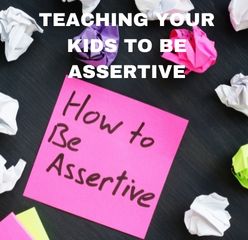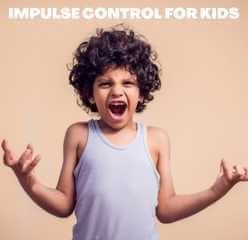Holidays around the world for kids are abundant and it might surprise you to find that there are more than you are aware of. Kid-friendly holidays are a great time for the whole family to enjoy quality time together which makes them even more special.
In this article, we will go through some of the celebrations around the world for kids that give children the chance to really enjoy themselves while also creating and maintaining certain values and traditions.

Before we go any further, are there any significance of holidays around the world for kids?
Why learning about holidays around the world is important
- Cultural understanding. It promotes cultural awareness and fosters respect for diverse traditions, reducing stereotypes and biases.
- Global perspective. It offers insights into different cultures, broadening one’s global outlook.
- Education. It provides valuable learning opportunities about history, geography, religion, and social customs.
- Tolerance and inclusivity. Understanding diverse holidays encourages tolerance and inclusivity in societies.
- Creates empathy. Learning about others’ holiday traditions cultivates empathy and a deeper understanding of their emotions and values.

How do you teach kids about holidays around the world?
Teaching kids about holidays around the world can be an exciting and educational experience. It helps broaden their cultural awareness, fosters empathy, and promotes an appreciation for diversity. Here’s how you can go about teaching kids about holidays from different cultures:
- Choose age-appropriate materials. Start by selecting age-appropriate books, videos, and resources that introduce various holidays and cultures. Look for materials that are engaging and visually appealing to capture a child’s interest.
- Focus on one holiday at a time. Begin with one holiday from a specific country or culture. Learning about holidays in smaller increments makes the information more digestible for children.
- Storytelling. Share stories related to the holiday. Stories often provide a context for understanding the significance and traditions associated with a particular celebration. You can also find children’s books that focus on holiday themes from different cultures.
- Crafts and activities. Engage kids in hands-on activities and crafts related to the holiday. For example, you could make traditional decorations, crafts, or cook dishes associated with the holiday. This reinforces learning through active participation.
- Cooking and food. Explore the culinary traditions of different cultures by preparing dishes associated with the holiday. Cooking together is not only educational but also a fun way to bond and experience different tastes.
- Watch videos and documentaries. Age-appropriate documentaries and videos about holiday celebrations in various countries can be both informative and entertaining for kids.
- Virtual tours. Explore virtual tours or videos of holiday celebrations and cultural events from around the world. Museums and cultural institutions often offer online resources for kids.
- Interactive maps and globes. Use maps, globes, or interactive online tools to show kids where different countries and cultures are located. This helps them understand the geographical context of these celebrations.
- Comparative studies. Encourage kids to compare and contrast holidays from different cultures. Discuss similarities and differences in traditions, foods, and customs.
- Art and music. Explore the art and music associated with the holiday. Create art projects or listen to traditional music to immerse kids in the cultural experience.
- Language. Introduce basic greetings or words in the language of the culture being studied. Learning a few words can be both fun and educational.
- Field trips and cultural events. If possible, attend cultural festivals, events, or museums that showcase the holidays and traditions of various cultures. These experiences can be memorable and immersive.
- Encourage questions. Create an open and non-judgmental environment where kids feel comfortable asking questions. Encourage them to ask about what they’re curious about.
- Reflect and discuss. After learning about a holiday, engage kids in discussions about what they’ve discovered. Ask them how they would feel if they celebrated that holiday or what aspects they found interesting.
- Respect and tolerance. Emphasize the importance of respecting and appreciating different cultures and their traditions. Teach kids about the value of diversity and the beauty of a multicultural world.

The biggest holidays around the world for kids
- Diwali
Diwali, also known as Deepavali, is an ancient Hindu festival celebrated in India and around the world. It signifies the victory of light over darkness and good over evil. The festival usually lasts five days, with each day holding its own significance and rituals.
- Kid-friendly activities
- Making diyas. Children can create colorful clay lamps called diyas, which are lit to symbolize the inner light that protects us from spiritual darkness.
- Rangoli. Kids can design beautiful rangoli patterns using colorful powders, rice, or flower petals outside their homes to welcome guests and add to the festive atmosphere.
- Traditional sweets and snacks
- Some popular Diwali treats include:
- Laddoos: Sweet spherical treats made from various ingredients like gram flour, coconut or semolina.
- Barfi: A sweet, dense confection often flavored with cardamom, rosewater or saffron.
- Namkeen: Savory snacks like chakli, mathri and sev are enjoyed during the festival.
- Some popular Diwali treats include:
- Fun facts about Diwali
- Diwali is celebrated by not only Hindus but also Jains, Sikhs and Buddhists, each with their unique customs.
- The lighting of oil lamps and candles signifies the triumph of knowledge over ignorance and hope over despair.
- Fireworks are a common part of Diwali celebrations and are believed to ward off evil spirits.
2. Hanukkah
Hanukkah, also known as the Festival of Lights, is a significant Jewish holiday celebrated worldwide.
History and significance of Hanukkah
Hanukkah commemorates the miracle of the oil that burned for eight days in the Second Temple of Jerusalem. This miracle signifies the rededication of the Temple following its desecration during the Maccabean Revolt.
Lighting the Menorah and playing dreidel
One of the central customs of Hanukkah is the lighting of the menorah, a nine-branched candelabrum. The menorah symbolizes the miracle of the oil. Families light one additional candle each night of the eight-day holiday. Children often play the dreidel game, a spinning top with Hebrew letters, for chocolate coins known as “gelt.”

Traditional Jewish foods during Hanukkah
Hanukkah cuisine features foods fried in oil to remember the oil miracle. Latkes, which are potato pancakes, and jelly-filled doughnuts called sufganiyot are popular choices. Families come together to enjoy these delicious treats during the festival.
Hanukkah traditions for kids
Hanukkah is a holiday with strong family traditions. Children actively participate in lighting the menorah and enjoy receiving Hanukkah gelt. It’s also common for families to exchange gifts or engage in charitable activities during this time, emphasizing the value of giving.
3. Christmas
READ: What are family Christmas traditions? (+ examples from around the world)
Exploring Christmas traditions from around the world can be a fascinating and educational experience for kids, especially as part of holidays around the world for kids.
Christmas celebrations worldwide
Christmas is celebrated in various ways worldwide. In the United States, it often involves decorating a Christmas tree, hanging stockings and exchanging gifts. In Mexico, there’s the tradition of Las Posadas, reenacting Mary and Joseph’s search for lodging. In Germany, children look forward to gifts from the Christkind. These diverse customs can provide valuable insights into global cultures.
Unique customs and traditions
Explore unique customs such as Sweden’s St. Lucia Day, where a girl dressed as St. Lucia brings light and pastries to her family. In the Philippines, Simbang Gabi involves attending early morning church services. Learn about the Catalan tradition of Caga Tió, a Christmas log that “poops” gifts when beaten. Learning about these traditions can broaden children’s perspectives and appreciation for diversity.
Christmas-themed crafts and recipes for kids
Get kids involved in the holiday spirit with hands-on activities. Create German-style paper stars (Froebelsterne) or Mexican poinsettia flowers from colored paper. Whip up Italian panettone or British mince pies for a taste of international flavor. These craft and recipe ideas provide a fun and creative way for kids to connect with global traditions.
4. Ramadan
Ramadan is the ninth month of the Islamic lunar calendar and holds great spiritual significance for Muslims worldwide. It commemorates the month during which the Quran, the holy book of Islam, was first revealed to the Prophet Muhammad. It’s a time for increased devotion, self-reflection and heightened spirituality.
Fasting during Ramadan is one of the Five Pillars of Islam. Muslims fast from dawn (Fajr) to sunset (Maghrib), refraining from food, drink and other physical needs. It is a form of self-purification, an opportunity for self-discipline, and a way to empathize with the less fortunate.
Iftar is the meal that breaks the fast after sunset during Ramadan. It’s often started with the eating of dates and followed by a variety of dishes. Common foods include soups, salads, fruit juices, and special desserts. Families often gather to share this meal, making it a time of togetherness.
Eid al-Fitr celebrations for kids
Eid al-Fitr, also known as the “Festival of Breaking the Fast,” marks the end of Ramadan. It’s a joyous occasion celebrated with communal prayers, feasting, and exchanging of gifts. For kids, it’s a time of excitement, new clothes, gifts (often in the form of money, known as “Eidi”) and spending time with family.
Special prayers are held at the mosque and children often receive special treats and presents. The festive atmosphere during Eid is truly a delight for kids.
5. Chinese New Year
Chinese zodiac story
- 12-year cycle with animal signs: Rat, ox, tiger, and more
Kid-friendly activities
- Make colorful paper lanterns
- Enjoy dragon-themed crafts
Traditional foods
- Dumplings for wealth
- Sticky rice cake for progress
- Fish for surplus
Dragon & lion dances
- Bring good luck and prosperity
- Performed during the New Year
6. Holi
Holi is a vibrant and joyous festival celebrated in India and other parts of the world. It typically falls in March and signifies the arrival of spring. The festival’s roots can be traced back to Hindu mythology, where it celebrates the victory of good over evil.
Specifically, it commemorates the triumph of Prahlad over the demoness Holika, symbolizing the victory of devotion and righteousness. Holi is a time for people to come together, forget their differences and embrace each other with love and colored powders.
Throwing colored powders and water balloons
One of the most iconic aspects of Holi is the playful throwing of colored powders and water balloons. Children and adults alike engage in friendly battles of colors, making this festival a kaleidoscope of hues. It’s an enchanting sight as everyone splashes vibrant colors on each other, signifying the breaking down of social barriers and the unity of all people.
Traditional Holi sweets and snacks
Holidays around the world for kids wouldn’t be complete without delicious treats. During Holi, people relish a variety of traditional sweets and snacks. Gujiya, a sweet dumpling filled with khoya and dry fruits, is a Holi favorite. Jalebi, a deep-fried spiral-shaped dessert soaked in sugar syrup, is also a popular treat. These mouthwatering delicacies add to the festive spirit, satisfying everyone’s sweet tooth.
Water gun fights and the fun of getting messy
For kids, Holi is an exhilarating time for water gun fights. Playful water battles with colorful water guns are a highlight. Running through the streets, spraying friends and family, and getting drenched are all part of the fun. Holi is a celebration where it’s perfectly acceptable to get messy, and everyone enjoys every bit of it. The mess and laughter create memorable moments and children particularly relish this aspect of the festival.
7. Easter
Easter is a significant Christian holiday celebrated worldwide. It holds deep religious meaning, but it’s also embraced with delightful traditions for kids.
Easter commemorates the resurrection of Jesus Christ and is the most important Christian holiday. It signifies new life, hope and redemption.
Easter egg decorating and hunts. Children love to decorate eggs with vibrant colors, creating beautiful and unique designs. These eggs are later hidden for exciting Easter egg hunts. Kids eagerly search for these hidden treasures in a fun-filled tradition.
Baking Easter treats with kids. Baking is a delightful way to bond with children during Easter. Families come together to create and decorate scrumptious Easter treats, such as cookies and cakes. It’s a mouthwatering experience kids cherish.
Easter Bunny traditions. The Easter Bunny is a beloved figure in Easter celebrations. Kids anticipate visits from the Easter Bunny, who leaves colorful eggs and candies. It’s a whimsical tradition that adds an extra layer of joy to the holiday.
8. Navratri
Navratri is a vibrant Indian festival celebrated with great enthusiasm. It holds immense cultural significance and is particularly captivating for children.
Navratri spans nine nights and is dedicated to the goddess Durga. It signifies the triumph of good over evil and is celebrated with devotion and fervor.
One of the highlights of Navratri is the lively Garba and Dandiya Ras dances. Children revel in these energetic and rhythmic dance forms, moving in intricate patterns with sticks or gracefully in a circle.
During Navratri, families prepare delicious Gujarati dishes, often featuring ingredients like peanuts and sesame seeds. Kids can enjoy these flavorful, wholesome meals.
Children eagerly dress up in vibrant, traditional attire during Navratri. Homes and public places are adorned with colorful decorations, adding to the festive spirit.
9. Songkran
Songkran, Thailand’s most famous holiday, is a festival that kids eagerly anticipate. Here are some key highlights that make it one of the best holidays around the world for kids:
Songkran marks the traditional Thai New Year, and its customs are deeply rooted in Thai culture. Children are taught to pay respect to their elders, often by performing a ritual called “Rod Nam Dum Hua.” During this ritual, kids pour scented water over the hands of their elders as a sign of respect and seek blessings in return.
Songkran is renowned for its famous water fights. Streets across Thailand transform into epic battlegrounds as people, including children, playfully splash water on each other. This lively tradition provides endless excitement and relief from the scorching heat.
Songkran is a time when families come together to prepare and share traditional Thai dishes and desserts. Kids can join in the kitchen to make delicious treats like mango sticky rice and Thai spring rolls.
Children participate in crafting intricate flower garlands known as “Phuang Malai.” These garlands, made with fragrant blossoms, are often offered at temples and worn as decorations during the festival.
So there you have it: 9 holidays around the world for kids! Kids see a joy in beauty in things that us older people can tend to overlook. They make us see things with fresh eyes. We can enjoy these holidays or festivals even more when we make our kids the centre of them.
Share your own holiday traditions in the comments below!





